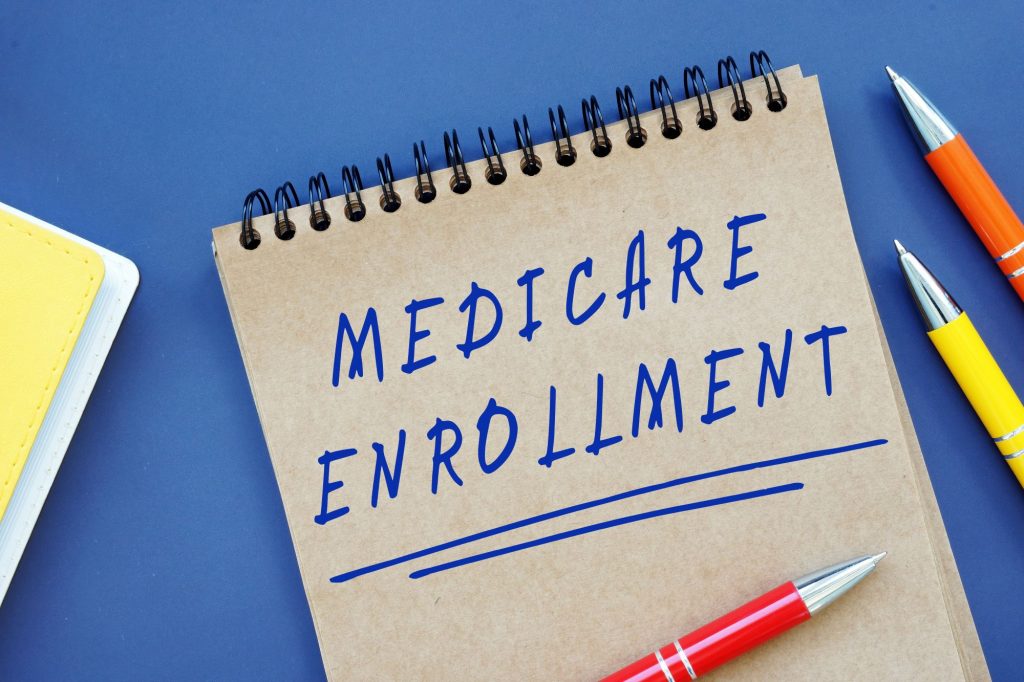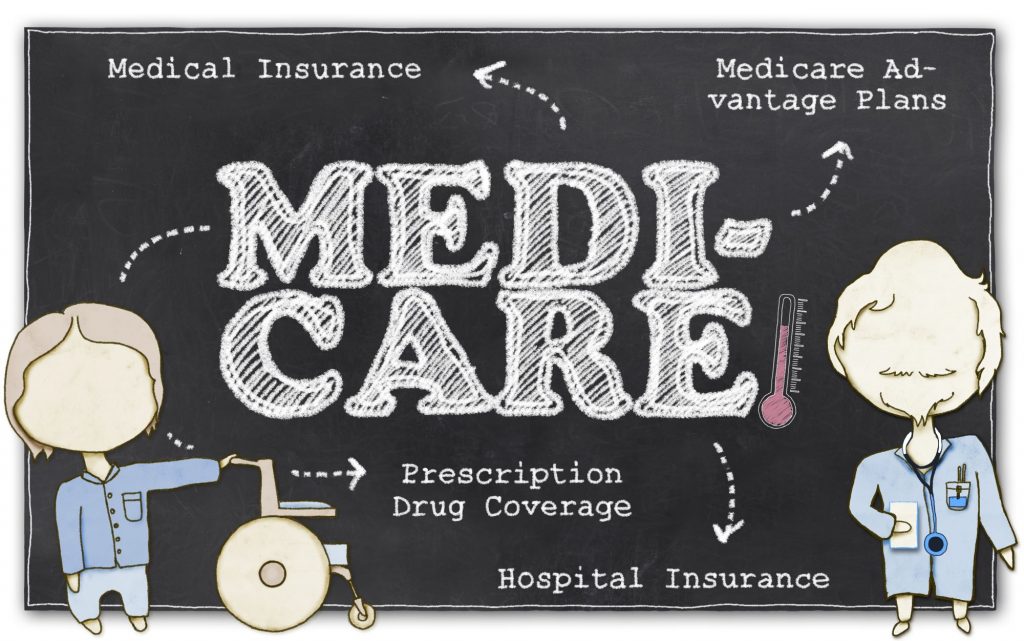Simplifying Medicare’s Enrollment Process

Toni,
I need to make the right Medicare decision, and you’re just the person to help me! I turn 65 in August and haven’t had a health plan for 2 years. As you can imagine, I don’t know where to start or what to do. My friends are advising me that if I don’t sign up for Medicare when I turn 65, I’ll be making a major Medicare mistake.
Can you please simplify the Medicare enrollment process?
Thanks,
Cynthia from Alvin, TX
Hi Cynthia,
Medicare is exploding with an American turning 65 every 8 seconds! This means 10,000 Baby Boomers are entering Medicare every day for the next 7-plus years.
Wow!
Fortunately, simplifying enrollment and understanding Medicare is my specialty. No one wants to make the wrong Medicare or medical decision, which only adds stress to getting older. Who wants stress in retirement?
Now, keep reading to find out more about enrollment scenarios that should help you and other Americans in your position!
1. Remember to Enroll at the Right Time

Scenario 1: Turning 65 and Receiving Your Social Security Check
- You should receive your “Welcome to Medicare” Kit with your Medicare card 90 days before turning 65.
- If you aren’t working full-time with employer benefits or covered by your spouse’s employer benefits when turning 65, please do not return your Medicare card. You do NOT want to pay for Medicare Part B. This can cause you to receive the “famous Part B penalty.”
Scenario 2: Turning 65 and NOT Receiving Your Social Security Check
- You will NOT automatically receive your “Welcome to Medicare” kit when turning 65 with your Medicare card.
- You must enroll in Medicare Parts “A, B, and D” to keep from receiving a “late enrollment penalty (LEP).
- You must enroll in Medicare online at www.ssa.gov/medicare at least 90 days prior to turning 65 for your Medicare Parts A and B to begin the 1st day of the month you turn 65. Go to Medicare.gov to enroll in your Medicare Part D plan.
- Do NOT wait until right before you turn 65 to enroll in Medicare. It will take time to receive your Medicare card before the 1st day of the month you turn 65.
Scenario 3: Turning 65 and Still Working Full-Time

Do you have Individual Health Insurance?
- Working full-time or contract labor with individual health insurance should enroll in Medicare Parts A, B, and D when turning 65 to avoid a Medicare Part B and D penalty.
- Note: Medicare does NOT recognize individual health plans as “creditable coverage.”
Do you have Qualified Employer Benefits and Work Full-Time?
- Medicare allows you to delay your Medicare Parts A and/or B if you or your spouse are working full-time with employer benefits, not retirement benefits, and you are covered by that specific employer benefits.
- To enroll in Medicare after turning 65 and having delayed Medicare Part B due to working full-time with employer benefits, complete Social Security forms CMS-L564 “Request for Employment Information” (signed by the employer or HR) and CMS-40B “Application for Enrollment in Medicare Part B.” Under “Remarks #12,” state which month you want your Medicare Part B to start. Take your forms to your specific Social Security office either in person, by fax, or by priority mail to enroll in Medicare Part B. Remember to write the words “Special Enrollment Period” across the top of each form to keep from receiving the famous Medicare Part B penalty.
Note: If you’re in this scenario, you may want to enroll in “Medicare Part A Hospital” ONLY!
Medicare Is NOT Free!

Medicare covers a lot! As such, there’s a cost associated with Medicare Parts A and B. The premium for Part A costs nothing if you worked 10 years or 40 quarters and paid Medicare taxes. Medicare Part B has a premium that is means-tested, depending on your annual income. Now, here are some figures that you might want to make a note of, Cynthia.
- In 2024, most Medicare beneficiaries pay $174.70 each month for their Part B premium.
- Medicare Part A (hospital) deductible for 2024 is $1,632, not once a year but every 60 days or 6 times a year.
- The 2024 Medicare Part B deductible is $240 once a year with Medicare paying 80% of the Medicare-approved amount and you paying the remaining 20%.
Medicare: Easy as A, B, C, and D!
Medicare Part A (Hospital Insurance)
Medicare Part A is the in-hospital part of Original Medicare. Most people do not have to pay for Medicare Part A. You or your spouse must have worked at least 10 years (40 quarters), paying into the social security system, to receive Medicare Part A premium-free.
Usually, Medicare Part A begins the first day of the month you turn 65 and are enrolled in Medicare, or the 25th month if you are under 65 and receiving Social Security disability benefits. For those not receiving Social Security at 65 and are still working and want to enroll in Medicare, you must go online to www.ssa.gov/benefits/medicare, 3 months prior to turning 65, and enroll in Medicare to be sure your Medicare begins the month you turn 65. This is Very Important!
Those still working with an HSA may consider not enrolling in Medicare due to the fact that even if you are enrolled in Medicare Part A, you can no longer fund your HSA.
What does Medicare Part A Pay for?
There is more covered than just in-patient hospital stays. For instance, if you have surgery, a skilled nursing stay, or need blood, then that is covered under Medicare Part A. Your chronic condition might require home health care or hospice. That is covered under Medicare Part A also.
Here is what is covered under Medicare Part A:
- Blood
- Home health care
- Hospice care
- Skilled nursing facility
- Most importantly, it covers in-patient hospital stays
Medicare Part B (Medical Insurance)
Medicare Part B pays for medically necessary services, such as doctors’ services, office visits, a doctor performing surgery, outpatient hospital care, and home health care that Medicare Part A does not cover. It also helps pay for preventive services
Now, it is important to recognize that while you might not have premiums for Part A, you are going to have a premium deducted for Part B. This premium can be deducted from your social security check, but if you are not collecting your social security, you will have to pay a monthly premium, as you pay for health insurance now.
I also want to be clear that your Medicare Part B premium is not frozen at one price. In fact, it is going to change from year to year.
Now, you might be deciding to not take Medicare Part B, for a variety of reasons. For instance, you might think that the premium is out of reach for your budget; or, you might be thinking, I don’t get sick. These are not reasons to avoid enrolling in Medicare Part B.
There are no exceptions to the enrolling process for Medicare Part B, so make sure when you are ready to get on Medicare that you enroll and take Medicare Part B. This is especially important if you are not working full-time, with an employer’s group benefits, or if you are not covered by a working spouse.
The Medicare Part B penalty is a 10% penalty per 12-month period that you could have had Medicare Part B but chose not to enroll or take it. This penalty is not limited to a specific timeframe but must be paid in addition to your monthly premium for the rest of your life. You can see how quickly this could get very expensive. After one year, the penalty is 10%, but after 3 years, it is up to 30%, and so on.
Usually, Medicare Part B begins the first day of the month you turn 65 and are enrolled in Medicare, or the 25th month if you are under 65 and receiving Social Security benefits. For those not receiving Social Security benefits prior to turning 65, you must go to Social Security 3 months prior to turning 65, and enroll in Medicare, or go online at www.ssa.gov/benefits/medicare to be sure your Medicare Part B begins the month you turn 65. This is Very Important!
What does Medicare Part B pay for?
- Medical and other services (outpatient surgery, surgeon, doctor visits, anesthesiologist, pathologists, second surgical opinion, etc.).
- Clinical laboratory services
- Home health care
- Durable medical equipment
- Blood
Original Medicare Part A/Part B and Medicare Supplement
To have your Original Medicare Part A and Part B deductibles and co-pays out-of-pocket cost picked up is with a Medicare Supplement. The Medicare and You Handbook states that the best time is to buy a Medicare Supplement/Medigap policy without having to answer any health questions. This special time is called your Medigap Open Enrollment Period. The period lasts for 6 months and begins on the first day of the month when you are both 65 or older and have enrolled in Medicare Part B. At the Toni Says office when a team member consults with a client, we treat enrolling in Medicare Part B like gold, because if you are past your Medigap open enrollment period, then you must answer health questions and that can refrain you from enrolling in a Medicare Supplement because you can be declined. But during the 6-month open enrollment period, as I said earlier, there are NO health questions.
Medicare Part C (Medicare Advantage Plan)
I am sure that most Americans are bombarded with Medicare Part C marketing material and most turning 65 are confused with all the mail and marketing telephone calls that begin 6 months prior to turning 65.
Medicare Part C is another way to get your Medicare benefits and have what Original/Traditional Medicare does not pay for, paid by the Medicare Advantage Plan. Private insurance companies, approved by Medicare, manage Medicare Part C. These Medicare Advantage plans must cover medically necessary services but can charge different co-payments, co-insurance, or deductibles for these services.
There are a variety of Medicare Advantage Plans available, and each of them has different pros and cons, depending on your medical needs. It is important to recognize that you need to review each of these plans to determine the one that will fit your needs. What is included in a Medicare Advantage Plan? Always ask your medical provider or facility if they are accepting what plan you wish to enroll in.
First, a Medicare Advantage Plan or Part C is a health plan option (HMO, PPO, PFFS, MSA & SNP), which is operated by a private insurance company. To access this coverage, you need to present your Medicare Advantage Insurance Card, not your Medicare card.
It is also important to note that an Advantage Plan is not the same as a Medicare Supplement Plan. They cover different aspects of care at different rates, and this could impact your out-of-pocket costs. Also, keep in mind the following:
- An MAPD plan provides your Medicare Part A (hospital insurance) and Medicare Part B (medical insurance) medically necessary services that Original/Traditional Medicare Plan provides.
- MAPD plans charge copayments, coinsurance, and deductibles for all services.
- MAPD Plans offer extra benefits that Original Medicare does not offer, such as vision, hearing, dental, diet, and exercise/gym programs.
- Most Medicare Advantage Plans have a network of providers.
Check with your hospital and doctor before you attempt to enroll in a Medicare Part C Advantage Plan. Find out if they accept the plan you are choosing.
Medicare Part D (Prescription Drug Plan)
Medicare Part D helps cover prescription drugs and can be especially important if you deal with chronic conditions requiring multiple prescriptions. This coverage helps to lower your prescription drug costs. You are only required to have Medicare Part A to be eligible for a Medicare Prescription Drug Plan.
Most people enroll in both Medicare Part A and Part B when they become eligible for Medicare, but some will wait until later to get Medicare Part D. There are many reasons for delaying Medicare Part D, such as having group benefits, still working, or having VA benefits. Medicare does not force you to enroll in a Medicare Prescription Drug Plan. However, there is a catch if you fail to enroll when you are first eligible, you will face a penalty of 1% per month that you wait to enroll.
You can only change your Medicare Advantage or Medicare Part D plan during Medicare Annual Enrollment from October 15th to December 7th every year, which Medicare calls the Annual Enrollment Period. This enrollment period allows you to make changes to the plan you might have previously chosen, as well as enroll if you had previously delayed enrolling in Medicare Part D. Let’s say you wait 3 years or 36 months to enroll in a Medicare Prescription Drug Plan. You will pay a PENALTY of 36 months x 1% = 36% more for as long as you are on Medicare. Don’t wait!
Here is what you need to know about Medicare Part D Plans. First, there are two ways to enroll, such as a stand-alone with Original Medicare and a Medicare Supplement, or with Original Medicare only.
Medicare Part D Drug Tiers
- Tier 1 – Preferred generic
- Tier 2 – Non-preferred generic
- Tier 3 – Preferred brand-name
- Tier 4 – Non-preferred brand-name drugs
- Tier 5 – Specialty drugs
There is also the Famous Donut Hole (which we will discuss in a future podcast). As you are choosing a plan, it is critical to verify that your prescriptions are covered under that plan. If not, you need to be sure to find a plan that includes as many of your medications as possible. Visit medicare.gov to explore your Medicare Part D plan options.
If you are not going to enroll in a Medicare Part D prescription drug plan, then you need to make sure that your current prescription plan is creditable. Creditable plans could include veterans’ benefits or an employer/union group health plan. Social Security will allow you to delay enrolling in Medicare with a creditable prescription plan, but you need to make sure you have documented your previous coverage.
You have 63 days to enroll in a Medicare Part D prescription drug plan when leaving a “Creditable” Prescription coverage plan.
Takeaway

Email info@tonisays.com your Medicare questions or call 832/519-8664 for a Medicare consultation. Toni’s book Medicare Survival Guide Advanced Edition and the new Confused about Medicare online course are available at www.tonisays.com.
Popular Articles About Medicare
Originally published June 05, 2024








